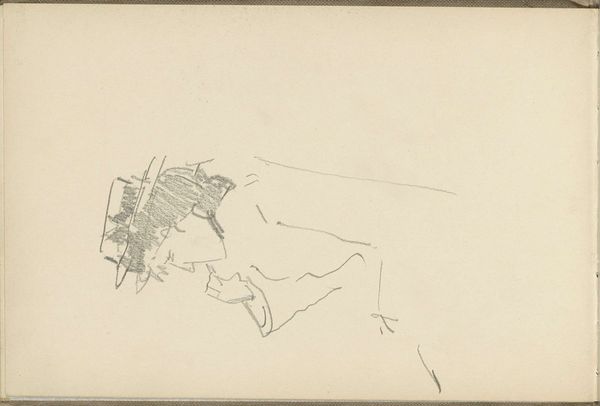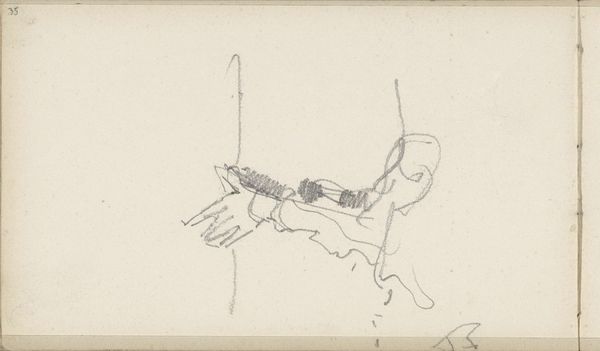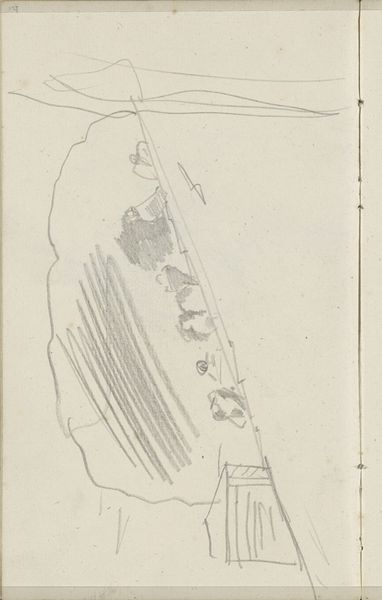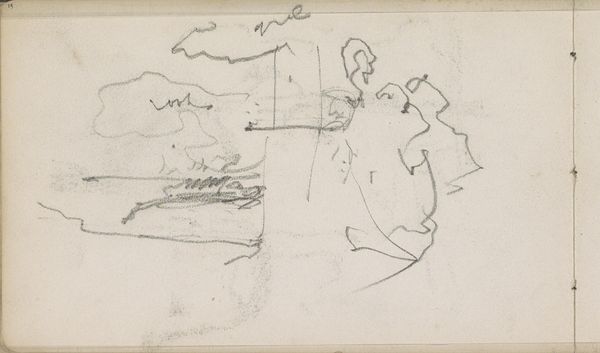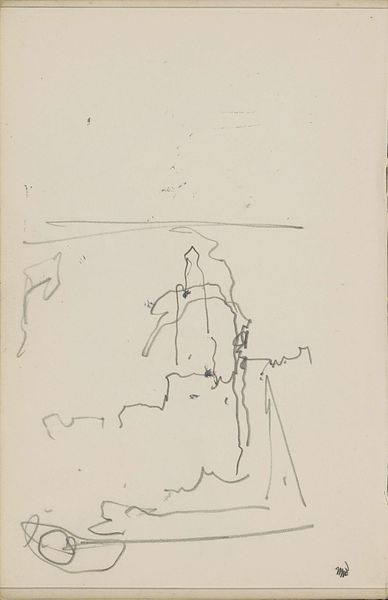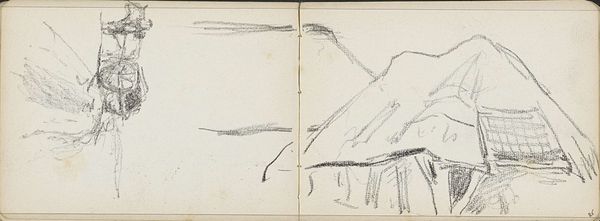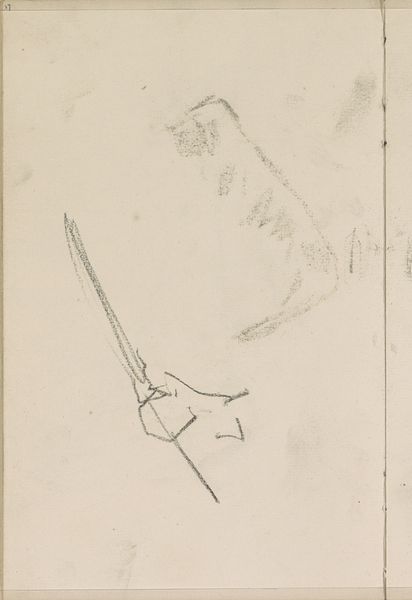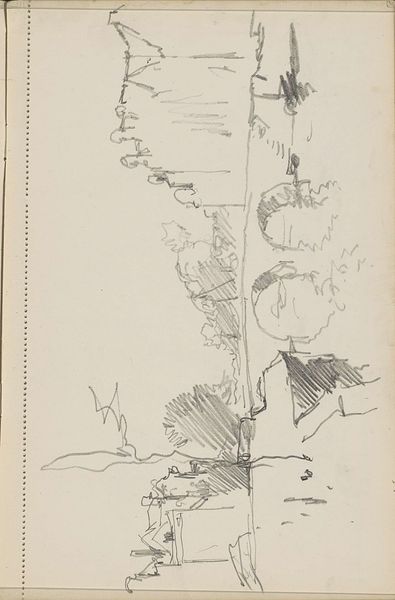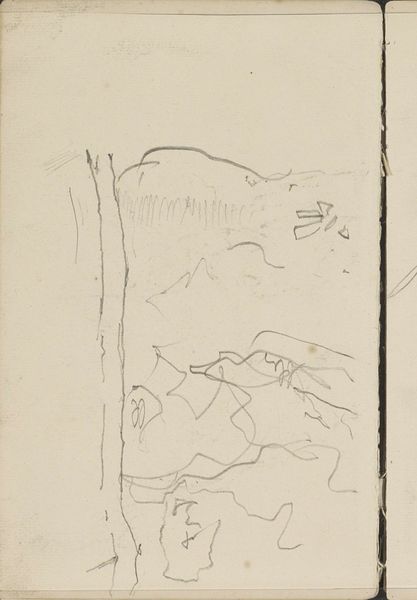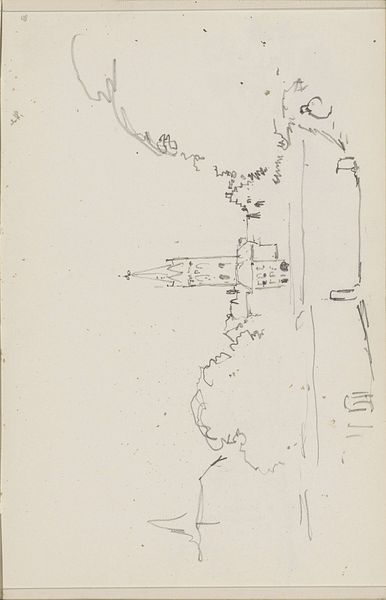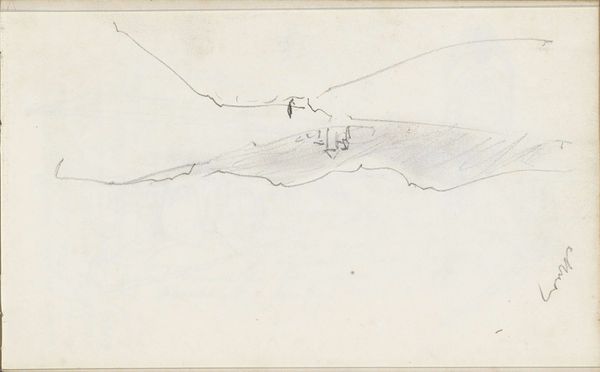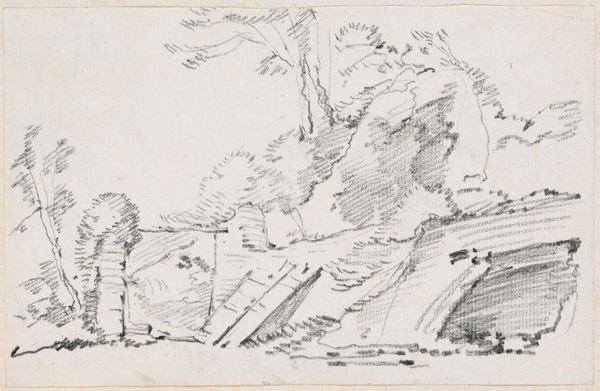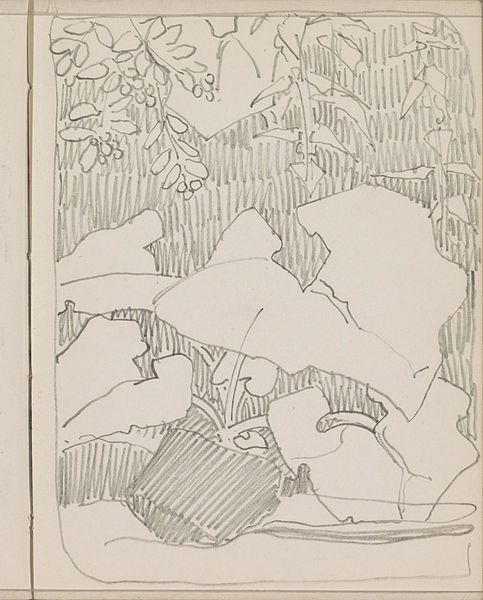
#
pen sketch
#
personal sketchbook
#
idea generation sketch
#
sketchwork
#
ink drawing experimentation
#
pen-ink sketch
#
pen work
#
sketchbook drawing
#
sketchbook art
#
initial sketch
Copyright: Rijks Museum: Open Domain
Editor: Here we have Alexander Shilling’s "Huizen te Voorburg," possibly from 1908. It looks like it's from a personal sketchbook, created with pen and ink. It’s very minimalist and almost feels incomplete, focusing mainly on the bare structure of buildings. What can you tell me about this sketch? Curator: Well, what immediately strikes me is the inherent labor within this piece. It's a sketchbook work, indicative of process. Look closely at the materiality of the drawing itself. What kind of pen was used? What was the quality of the paper? These might seem like simple questions, but the answers tell us a lot about Shilling’s access to resources and the everyday practice of art-making at the time. Was this high-quality paper, reserved for important works, or something more utilitarian? Editor: I see what you mean. I hadn't considered the paper and pen themselves as part of the story. Does the location, Voorburg, play a role? Curator: Absolutely! Considering the geographic and social context enriches our understanding. Voorburg was becoming increasingly industrialized in the early 20th century. This simple pen-and-ink sketch may offer insight into labor, such as, was this landscape documenting an industrialized or still-agricultural landscape, what local materials were used to build those homes, and where might those materials have come from? This image offers hints, and reminds us of the labor, materials and resources required to both depict, and construct, our lived environment. Editor: That's fascinating. So, it’s not just about what's depicted, but also about the how and why it was made. I guess I was too focused on the aesthetic quality, and missed a lot. Curator: Precisely! By shifting our attention to the materials and means of production, we gain a richer appreciation for the artwork as a product of its time, as well as its connection to both artist, labor and place.
Comments
No comments
Be the first to comment and join the conversation on the ultimate creative platform.
